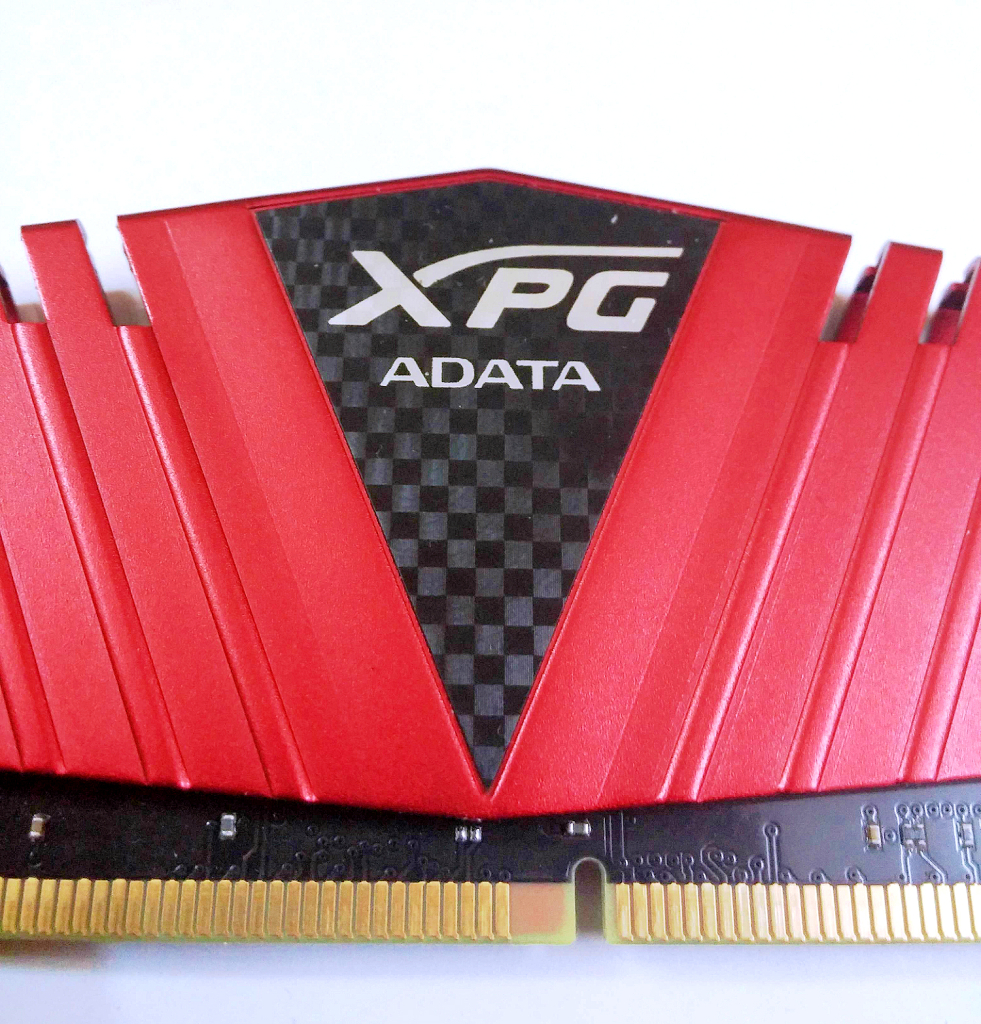
ADATA has been one of the companies who are slowly setting their foothold in India. While their memory products are popular outside, Indian tech market is a different beast to tackle. Fortunately for ADATA, they have teamed up with hardware companies which already have a big presence here to spread awareness about their products: a strategy that is slowly paying them dividends. Though ADATA has now diversified their portfolio, they are primarily known for their memory products and for any memory manufacturer the focus point is always DRAM modules. With Intel’s HEDT Haswell-E platform debuting with support for consumer grade DDR4 memory, ADATA has also joined the bandwagon. With DD R4, they are not introducing any new SKUs but just expanding their already existing XPG lineup. To differentiate from their DDR3 memory sticks, the DDR4 RAM carries an additional ‘Z1’ moniker.

The design methodology has also gotten a facelift. The Heatsink has a triangular top section and a bottom which looks like a mirror image of the top– which means that it is highest around the center of the DRAM stick and then tapered towards both ends, giving it a unique shape. There are ridges in the Heatsink and the patterns carry along the Heatsink in a subtle stamped in manner. The center of the heatsink has ADATA and XPG branding over a carbon fiber finish, something which I have seen ADATA carry across their recent product lines (HD710 had a similar branding design as well).

The XPG Z1 is available in a variety of speeds and timings, from DDR4-2133 CL15 to DDR4-3333 CL16. Worth mentioning here is that while the Heatsinks for sticks up to DDR4-2800 have a shiny red and black livery, modules with speeds beyond that replace the red with Gold.

For this review, ADATA sent me their quad channel 16GB DDR4-2400 kit. DDR4 as a platform is yet to mature but as with most succeeding standards it promises better performance in a lesser power and thermal envelope compared to DDR3 (something which we will explore in a future article). The DDR4 DRAM modules have a default operating voltage of 1.2v and can generally operate up to 1.5 volts, though for safety I do not advise going beyond 1.4v).
Let’s look at the full specifications for the XPG Z1.

Test System:
The test system comprised of the following:
- Intel Core i7-5930K, 6C/12T, 3.5 GHz, 3.7GHz Turbo
- GIGABYTE X99 UD5 WiFi Motherboard, Socket 2011-3
- ADATA XPG Z1 DDR4 Memory, 16 GB, 2400MHz, CL16
- Sapphire AMD R9 270X Toxic GPU
- Kingston SSDNow V300 64GB SSD
- Cooler Master Silent Pro M1000 PSU, 80 Plus Bronze
- Cooler Master Nepton 240M CPU cooler
- Open Test Bed
Performance:
I ran the memory intensive benchmarks to test the XPG Z1 kits. First up is AIDA64, FinalWire’s acclaimed benchmark suite. It has a full memory suite of its own. I tested the kits in different timings and frequencies.

Super PI is a single threaded benchmark that calculates pi to a specific number of digits. It uses the Gauss-Legendre algorithm and is a Windows port of a program used by Yasumasa Kanada in 1995 to compute pi to 232 digits. I ran it to compute up to 1 million digits and then analyzed the best and worst times.

wPrime is a leading multithreaded benchmark for x86 processors that tests your processor performance by calculating square roots with a recursive call of Newton’s method for estimating functions, with f(x)=x2-k, where k is the number we’re square rooting, until Sgn(f(x)/f'(x)) does not equal that of the previous iteration, starting with an estimation of k/2. It then uses an iterative calling of the estimation method a set amount of times to increase the accuracy of the results. It then confirms that n(k)2=k to ensure the calculation was correct. It repeats this for all numbers from 1 to the requested maximum.
Again the methodology was simple, comparing values between 1M and 32M runs across different timings and frequencies.

The highest clock speed these kits reached was 3050MHz CL16 at 1.43v, which is a whopping 27% increase over the stock frequencies.
Conclusion:
No matter how we try to cut it, DDR4 is expensive. Pick something very basic, and you are looking at spending 20k INR pretty easily, and from there the prices keep on soaring until you’re staring at the possibility of losing a kidney and a half paying for one of the kits. But then every emerging technology had been eye-wateringly pricey during their initiation.
The XPG Z1 is an impressive piece of technology. I love what ADATA has done with the aesthetics of the Z1, maintaining an aggressive look while not venturing on the gaudy side. The performance is there to match too, with this kit reaching DDR4-3000+ speeds with little effort. While we are still exploring the benefits of pushing the DRAM to such obscene frequencies in consumer space, for enthusiasts this should bring good news. No word on pricing yet but watching the trends for DDR4 memory pricing, I wouldn’t expect this to retail at any price cheap. In essence, the ADATA XPG Z1 is a premium DDR4 memory kit delivering performance and looks in the same breath. Just check your bank balance before buying one, though.
Edit: ADATA just updated me with the prices. These kits will have an MRP of Rs.26,730/- which makes them a little pricier than the competition. But I won’t pass a judgment yet before I have tested those other kits. Let this be reserved for a future comparison review.








